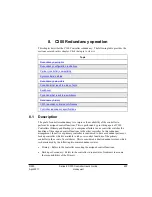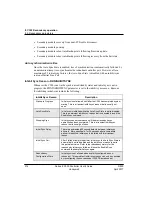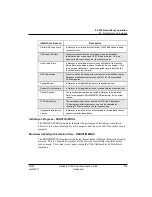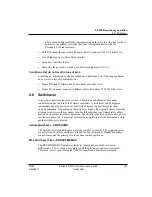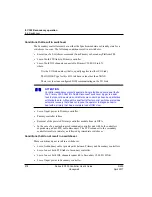
R500
April 2017
Series 8 C300 Controller User's Guide
Honeywell
219
8. C300 Redundancy operation
8.7. Redundancy history
Secondary controller failure.
Removal of the powered Secondary controller module from its IOTA.
Inserting any controller module into a powered Secondary IOTA.
Loss of a single FTE link to Primary controller.
Loss of a single IOL channel connected to Primary C300 I/O Link.
Data communication failures with Secondary controller during synchronization.
Become Primary command - BECMPRICMD
The Become Primary command is used to cause an unsynchronized secondary module to
transition into the primary role in the absence of a partner module. Specifically, this
command applies only if the unsynchronized secondary has no view to a partner module
across the redundancy cable and the primary IP address is not occupied.
8.7
Redundancy history
The C300 and Series 8 FIM
support a table with 16 entries of redundancy history. There
are 3 columns representing redundancy history time, state, and reason. The controller
internally implements a circular list so that only the most recent 16 entries are retained
once the number of redundancy history exceeds 16.
RDNHISTTIME - Redundancy History Time. The system time captured at the time
the entry was added to the table.
RDNHISTSTATE - Redundancy History State. Indicates milestones with respect to
redundancy-related activities like redundancy role states, compatibility states,
synchronization states, user commands, sync abort indication, and role change
indication. Set to dashes "- - -" when entry not yet initialized.
RDNHISTREASON - Redundancy History Reason. Optionally indicates rationale
for the occurrence of the associated RDNHISTSTATE entries. Includes reason for
loss-of-sync, redundancy role change, commencing initial sync, and partner
incompatibility. Set to dashes "- - -" when entry not applicable (or entry not yet
initialized).

